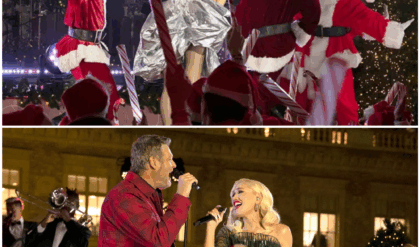In the ever-expanding cosmos of the Marvel Cinematic Universe, few announcements have sent shockwaves quite like the one that rippled through San Diego Comic-Con in July 2024. Robert Downey Jr., the man who single-handedly ignited the MCU inferno as Tony Stark in Iron Man, is saddling up for a villainous encore—not as a heroic Avenger, but as the tyrannical Doctor Doom in the upcoming blockbuster Avengers: Doomsday. But this isn’t just any comeback; Downey himself let slip during a recent press junket that the film is poised to shatter records as the most expensive movie ever made, with a staggering budget ballooning between $600 million and $1 billion. As production wraps on this behemoth, set for a December 18, 2026, theatrical debut, the stakes couldn’t be higher. Doctor Doom isn’t just the antagonist; he’s the architect of multiversal mayhem, promising a clash of heroes that could redefine Marvel’s legacy—or bury it under its own ambition.
The journey to Avengers: Doomsday reads like a plot twist from one of the MCU’s own scripts. Originally christened Avengers: The Kang Dynasty, the film was meant to crown Jonathan Majors’ Kang the Conqueror as the saga’s ultimate big bad, pitting the Avengers against a time-hopping despot in a tale of dynastic conquest. But fate, or perhaps studio calculus, intervened. Majors’ off-screen legal troubles—culminating in his December 2023 conviction for assault and harassment—prompted Marvel to sever ties, leaving a villainous vacuum at the heart of Phase Six. Enter Doctor Doom, the Latverian genius-sorcerer whose comic book lore rivals Thanos in scope and menace. Penned by Michael Waldron (Loki, Multiverse of Madness) and helmed by the Russo Brothers—Anthony and Joe, fresh off Endgame‘s $2.79 billion haul—the pivot to Doom wasn’t mere damage control. It was a bold reclamation, transforming a derailed dynasty into a doomsday reckoning.
Downey’s casting as Victor von Doom was the bombshell that detonated Comic-Con’s Hall H. Cloaked in the villain’s signature emerald robes and metallic mask, he strode onstage to a roar that echoed through the convention center, only to unmask with a wry grin and the quip, “New mask, same task.” At 59, Downey embodies a performer who’s transcended typecasting; his Stark was charisma incarnate, a flawed billionaire playboy whose arc ended in sacrificial nobility. Now, as Doom—a scarred monarch blending Iron Man’s intellect with a god complex—he promises a delicious irony. “It’s the ultimate what-if,” Downey teased in a Variety interview, hinting at multiversal sleight-of-hand where this Doom hails from a parallel realm, unburdened by Stark’s redemption. No resurrection for Tony here; instead, Downey channels Doom’s aristocratic menace, his armored visage concealing a mind that views the world as a chessboard and himself as the unchallenged king. Early set photos from Pinewood Studios—where filming kicked off in April 2025 under the codename Apple Pie—show Downey in full regalia, barking orders amid holographic Latverian spires, a far cry from Stark’s quippy suits.
What elevates Doomsday to stratospheric heights, however, is its unprecedented budget. Downey’s revelation during a September 2025 Forbes sit-down peeled back the curtain on a production that’s not just ambitious but audaciously extravagant. Clocking in at an estimated $600 million to $1 billion—surpassing even the combined $1 billion-plus for Infinity War and Endgame—this isn’t hyperbole; it’s Hollywood’s high-wire act. Production costs alone have eclipsed $500 million by mid-shoot, fueled by a dizzying array of factors. Visual effects dominate, with over 4,000 shots demanding Weta Digital and Industrial Light & Magic’s wizardry to conjure Doom’s techno-mystical arsenal: reality-warping portals, biomechanical Doombots swarming like metallic locusts, and a shattered multiverse where timelines bleed into cataclysmic collages. Filming across England, Atlanta, and rumored Wakandan exteriors in Namibia has racked up logistics bills that dwarf smaller franchises, while pandemic-era protocols linger in the form of on-set medical teams and redundant crews.
Then there’s the cast—a veritable who’s-who of MCU royalty that’s turned salary negotiations into a fiscal arms race. Downey commands a reported $100 million-plus, including backend points, leveraging his Doom dual-role across Doomsday and the 2027 sequel Secret Wars. Chris Evans returns as a grizzled Captain America variant, pocketing $20 million; Tom Holland’s Spider-Man swings in for $15 million; and Brie Larson’s Captain Marvel adds $10 million to the tally. Newcomers like Pedro Pascal’s Reed Richards (from The Fantastic Four: First Steps) and Vanessa Kirby’s Sue Storm tip the scales further, with ensemble fees for returning stalwarts—Chris Hemsworth’s Thor, Elizabeth Olsen’s Scarlet Witch, and Anthony Mackie’s Sam Wilson as the new Cap—pushing actor payouts past $250 million. “It’s an investment in spectacle,” Downey quipped, but insiders whisper of overruns from reshoots to integrate X-Men crossovers, including Patrick Stewart’s Professor X and Ian McKellen’s Magneto from Fox’s legacy films. Marketing? Another $200 million war chest for global trailers, tie-ins, and that inevitable Doom Funko horde.
This fiscal Armageddon isn’t without precedent in Marvel’s ledger. Endgame clocked $400 million (pre-rebates), but Doomsday‘s scale reflects the MCU’s maturation—or bloat. Post-Endgame, Phase Four and Five grappled with superhero fatigue, diluted by Disney+ deluges and box-office stumbles like The Marvels ($206 million gross). Yet, the Multiverse Saga demands a finale worthy of its sprawl: 30-plus heroes converging against Doom’s incursion, where he doesn’t just conquer worlds but stitches them into a tyrannical patchwork. The plot, gleaned from leaks and teasers, unfolds in a fractured reality where Doom—exiled from his Latverian throne—exploits multiversal rifts to amass an army of variants. The Avengers, fragmented post-Thunderbolts* (2025), must ally with the Fantastic Four, X-Men holdouts, and even Guardians remnants to breach Doom’s fortress dimension. High-octane set pieces tease aerial dogfights over a crumbling New York, psychic duels in astral planes, and a climactic siege where Doom’s mask cracks—literally—to reveal Downey’s steely gaze.
Doctor Doom’s centrality isn’t mere villain-of-the-week filler; he’s the saga’s shadow puppetmaster. In comics, Victor von Doom debuted in 1962’s Fantastic Four #5, a scarred prodigy whose fusion of science and sorcery makes him Marvel’s apex intellect. He’s clashed with everyone from Spider-Man to the Silver Surfer, but his endgame—ruling Battleworld in Secret Wars—mirrors the MCU’s multiversal pivot. Here, Doom isn’t Thanos’ quest for balance; he’s a despot forging order from chaos, viewing heroes as pawns in his grand design. Downey’s take leans into the tragedy: a man whose facial disfigurement (from a lab mishap) birthed godlike hubris, armored not just in vibranium-adamantium alloy but in unyielding isolation. “Doom sees the multiverse as a flawed equation,” Downey elaborated at D23 Expo, hinting at monologues that echo Stark’s wit but laced with megalomania. Trailers, dropped in October 2025, showcase Doom manipulating timelines—erasing variants, puppeteering heroes—culminating in a standoff where he intones, “In my world, there are no accidents… only Doom.”
The ensemble pulses with multigenerational firepower, blending MCU vets with fresh blood. Returning anchors include Mackie’s Falcon-Cap hybrid leading a ragtag team, Olsen’s Wanda probing Doom’s psychic wards, and Hemsworth’s Thor wielding a storm-forged Mjolnir variant. Evans’ Cap, now a nomadic elder statesman, mentors a young Cyclops (played by a recast unknown), bridging Fox’s X-verse. The Fantastic Four—Pascal’s stretchy Reed clashing intellects with Doom, Kirby’s invisible force fields shielding the fray—anchor the emotional core, their family bonds fracturing under Doom’s divide-and-conquer schemes. Cameos abound: Ryan Reynolds’ Deadpool slicing through Doombots with fourth-wall jabs, Simu Liu’s Shang-Chi rings clanging against enchanted gauntlets. Even legacy nods like Kelsey Grammer’s Beast add gravitas, teasing X-Men integrations that could spawn spin-offs.
Production milestones underscore the film’s Herculean scope. Principal photography wrapped in late September 2025, a brisk six months that belies the chaos: early leaks of Downey’s masked monologues went viral, while reshoots in Vancouver tweaked Doom’s origin for multiversal flair. The Russos, whose Endgame orchestrated 2,000 VFX shots, here command 5,000-plus, blending practical sets—like a towering Latverian citadel built at Pinewood—with ILM’s quantum-reality engines. Composer Alan Silvestri returns, his motifs twisting heroic themes into dirges for Doom’s empire. Post-production, slated through mid-2026, includes AI-assisted de-aging for flashbacks and Dolby Vision enhancements for IMAX spectacles.
Yet, for all its grandeur, Doomsday carries the weight of expectation. Marvel’s post-pandemic recalibration—slimming Phase Six to prioritize quality—positions this as a make-or-break tentpole. At $1 billion, breakeven demands $2.5 billion-plus globally, a bar Endgame cleared but few since. Fan fervor runs hot: Comic-Con chants drowned out skeptics, while Downey’s Doom has trended ceaselessly, spawning fan art of masked Starks. Critics, though, eye the budget warily—echoing Rise of Skywalker‘s $593 million splurge for middling returns. “It’s a gamble on Downey’s draw,” one insider noted, but with Secret Wars looming as a $1.2 billion sequel, the saga’s endgame is all-in.
As 2026 dawns, Avengers: Doomsday looms not just as spectacle but salvation. Downey’s Doom isn’t a retread; it’s reinvention—a villain who mirrors our heroes’ hubris, forcing a reckoning with power’s price. In a multiverse of variants, one truth endures: with Downey at the helm, Marvel’s costliest chapter might just be its crowning glory. The apocalypse awaits—will the Avengers rise, or fall to Doom?





